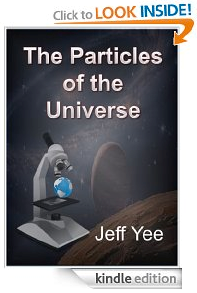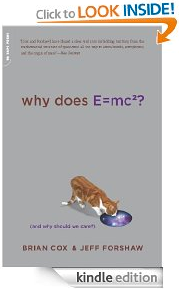-
What is Life?
Posted by Lois Seelandt on 2/26/2021 3:00:00 PM Nobel laureate Erwin Schrödinger's What is Life? is one of the great science classics of the twentieth century. A distinguished physicist's exploration of the question which lies at the heart of biology, it was written for the layman, but proved one of the spurs to the birth of molecular biology and the subsequent discovery of the structure of DNA. The philosopher Karl Popper hailed it as a 'beautiful and important book' by 'a great man to whom I owe a personal debt for many exciting discussions'. It appears here together with Mind and Matter, his essay investigating a relationship which has eluded and puzzled philosophers since the earliest times. Schrodinger asks what place consciousness occupies in the evolution of life, and what part the state of development of the human mind plays in moral questions. Brought together with these two classics are Schrödinger's autobiographical sketches, published and translated here for the first time. They offer a fascinating fragmentary account of his life as a background to his scientific writings, making this volume a valuable additon to the shelves of scientist and layman alike.Comments (-1)(0)
Nobel laureate Erwin Schrödinger's What is Life? is one of the great science classics of the twentieth century. A distinguished physicist's exploration of the question which lies at the heart of biology, it was written for the layman, but proved one of the spurs to the birth of molecular biology and the subsequent discovery of the structure of DNA. The philosopher Karl Popper hailed it as a 'beautiful and important book' by 'a great man to whom I owe a personal debt for many exciting discussions'. It appears here together with Mind and Matter, his essay investigating a relationship which has eluded and puzzled philosophers since the earliest times. Schrodinger asks what place consciousness occupies in the evolution of life, and what part the state of development of the human mind plays in moral questions. Brought together with these two classics are Schrödinger's autobiographical sketches, published and translated here for the first time. They offer a fascinating fragmentary account of his life as a background to his scientific writings, making this volume a valuable additon to the shelves of scientist and layman alike.Comments (-1)(0) -
Sync
Posted by Lois Seelandt on 2/1/2021 1:00:00 PM The tendency to synchronize may be the most mysterious and pervasive drive in all of nature. It has intrigued some of the most brilliant minds of the 20th century, including Albert Einstein, Richard Feynman, Norbert Wiener, Brian Josephson, and Arthur Winfree.
The tendency to synchronize may be the most mysterious and pervasive drive in all of nature. It has intrigued some of the most brilliant minds of the 20th century, including Albert Einstein, Richard Feynman, Norbert Wiener, Brian Josephson, and Arthur Winfree.At once elegant and riveting, Sync tells the story of the dawn of a new science. Steven Strogatz, a leading mathematician in the fields of chaos and complexity theory, explains how enormous systems can synchronize themselves, from the electrons in a superconductor to the pacemaker cells in our hearts. He shows that although these phenomena might seem unrelated on the surface, at a deeper level there is a connection, forged by the unifying power of mathematics.
Comments (-1)(0) -
The Particles of the Universe
Posted by Lois Seelandt on 12/3/2020 1:00:00 PM The universe is simply energy. Everything around us, including matter, is energy. A deep look into the mysteries of the subatomic world – the particles that make up the atom – provides answers to basic questions about how the universe works. To solve the future of mankind’s energy needs we need to understand the basic building blocks of the universe, including the atom and its parts. By exploring the subatomic world we’ll find more answers to our questions about time, forces like gravity and the matter that surrounds us. More importantly, we’ll find new ways to tap into the energy that exists around us to power our growing needs. In a new branch of particle physics, where tiny particles are thought of as energy waves, we find new answers that may help us in our quest to find alternative energy sources.Comments (-1)(0)
The universe is simply energy. Everything around us, including matter, is energy. A deep look into the mysteries of the subatomic world – the particles that make up the atom – provides answers to basic questions about how the universe works. To solve the future of mankind’s energy needs we need to understand the basic building blocks of the universe, including the atom and its parts. By exploring the subatomic world we’ll find more answers to our questions about time, forces like gravity and the matter that surrounds us. More importantly, we’ll find new ways to tap into the energy that exists around us to power our growing needs. In a new branch of particle physics, where tiny particles are thought of as energy waves, we find new answers that may help us in our quest to find alternative energy sources.Comments (-1)(0) -
Why Does E=mc2?
Posted by Lois Seelandt on 11/2/2020 8:00:00 AM
The most accessible, entertaining, and enlightening explanation of the best-known physics equation in the world, as rendered by two of today’s leading scientists.
Professor Brian Cox and Professor Jeff Forshaw go on a journey to the frontier of 21st century science to consider the real meaning behind the iconic sequence of symbols that make up Einstein’s most famous equation, E=mc2. Breaking down the symbols themselves, they pose a series of questions: What is energy? What is mass? What has the speed of light got to do with energy and mass? In answering these questions, they take us to the site of one of the largest scientific experiments ever conducted. Lying beneath the city of Geneva, straddling the Franco-Swiss boarder, is a 27 km particle accelerator, known as the Large Hadron Collider. Using this gigantic machine—which can recreate conditions in the early Universe fractions of a second after the Big Bang—Cox and Forshaw will describe the current theory behind the origin of mass.
Alongside questions of energy and mass, they will consider the third, and perhaps, most intriguing element of the equation: 'c' - or the speed of light. Why is it that the speed of light is the exchange rate? Answering this question is at the heart of the investigation as the authors demonstrate how, in order to truly understand why E=mc2, we first must understand why we must move forward in time and not backwards and how objects in our 3-dimensional world actually move in 4-dimensional space-time. In other words, how the very fabric of our world is constructed. A collaboration between two of the youngest professors in the UK, Why Does E=mc2? promises to be one of the most exciting and accessible explanations of the theory of relativity in recent years.Comments (-1)(0)


